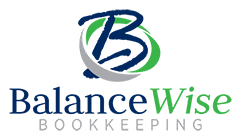Accounting Application Conversion
Conversion from your current accounting system to your new choice of accounting software.*
This is a one-time fee & includes the following:
- Set up of accounting software
- Enter conversion balances
- Ensure all accounts are reconciled
*Does not include conversion of payroll
Implementing new accounting software can be intimidating and a substantial challenge. To assure success, it is important to fully understand our client’s objectives regarding the new application and develop a plan to meet those goals. Do they want automated invoicing, debtor reminders, better reports?
Next we need to know everyone who will be using the new system and what level of access each needs. What are their current processes, and which are no longer needed? Which can be enhanced? Where are there unnecessary or redundant steps?
Then, clients must decide on a changeover date that allows plenty of time for this complex process to reduce user stress as they work on data preparation, testing & new system training by planning for reduced productivity, ideally at the end of an accounting quarter or fiscal year.
Starting with clean data helps save time and make conversion a success. Properly prepared, data can make converting a seamless process. There are a number of steps to take prior to converting to help ensure success.
Pre-conversion is an outstanding time to assess the chart of accounts and make any needed changes, such as new account numbers. Because the chart of accounts dictates how the income statement and balance sheet will be laid out and presented, without the correct layout to suit the client’s needs, they will not get a clear picture of how their business is performing.
Data to be moved to the new system must be accurately mapped since data tables are usually quite different from one system to another. A single function can impact 15 or 20 unique tables and could be running with fragmented or conflicting data.
Taking time to clean up data prior to conversion gives clients the opportunity to:
- Condense general ledger by scrutinizing transactions, planning for new account numbers and cost centers, using conversion tables to ensure a smooth transition.
- Standardize capitalization, abbreviations, & acronyms
- Identify missing or duplicate records
- Purge inactive customers, vendors, employees, inventory items, etc. to clean things up and make the new system easier to use after conversion.
- Reformat data if necessary.
- Print an income statement and balance sheet to compare after the conversion to confirm all data transferred correctly.
- Clients with payroll may want to run payroll and pay taxes before converting.
- Create a backup file to restore information if needed.
The quality of converted data will only be as good as the sources we import from. Sometimes it makes sense to start with only a balance sheet as of the conversion date. Other times, net changes by account work well.
It is imperative to verify that information converts accurately. Testing converted data is just as necessary as data cleanup. After converting we compare data from the general ledger, adjusting journal entries, trial balance, vendor lists and client information. Training is the next phase, Adequate instruction on the functions and features of the new software is the bedrock for continued development of workflow processes. We start with training on the core modules such as job costing, payroll, accounts payable and accounts receivable.
